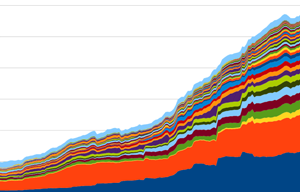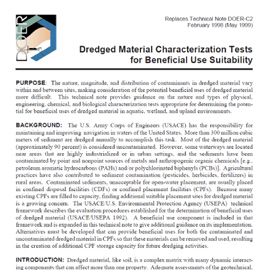About the DOER Program and News Highlights
Discover
The DOER Program
The Dredging Operations and Environmental Research Program (DOER) supports the U.S. Army Corps of Engineers Operation and Maintenance Navigation Program. Research is designed to balance operational and environmental initiatives and to meet complex economic, engineering, and environmental challenges of dredging and disposal in support of the navigation mission. Research results will provide dredging project managers with knowledge and technology for cost-effective operation, evaluation or risks associated with management alternatives, and environmental compliance.













